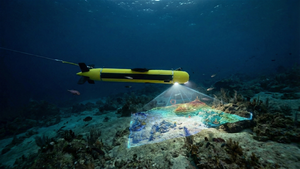Harmony Biosciences Holdings, Inc. (Nasdaq: HRMY) today announced that it received a Refusal to File (RTF) letter from the U.S. Food and Drug Administration (FDA) for pitolisant for the treatment of excessive daytime sleepiness (EDS) in adult patients with idiopathic hypersomnia (IH). Harmony’s 2025 net revenue guidance of $820-$860 million remains unchanged.
“We are disappointed with this short-term setback, but our long-term strategy for pitolisant in IH remains firmly on track with our focus on Pitolisant HD,” said Jeffrey M. Dayno, M.D., President and Chief Executive Officer of Harmony Biosciences. “We made the decision to submit the sNDA based on our belief in pitolisant’s overall benefit-risk profile in IH and our deep commitment to the patient community, despite the challenge associated with this submission. Our long-term business strategy has always been to extend our leadership in sleep/wake through the development of Pitolisant HD, an enhanced and higher-dose formulation, which represents the more significant opportunity in IH given its optimized profile and provisional patent filed out to 2044. We are on track to initiate a Phase 3 registrational trial of Pitolisant HD in IH in Q4 2025, with a target PDUFA date in 2028.”
“Our planned Phase 3 registrational trial, a double-blind, randomized, parallel-group study in patients with IH, is based on input from the FDA,” said Kumar Budur, M.D., M.S., Chief Medical and Scientific Officer at Harmony Biosciences. “We believe this study design will effectively demonstrate the benefit of pitolisant in patients with IH based on the robust clinical response that was observed in the Phase 3 INTUNE Study. We are grateful to the patients and clinicians who participated in the INTUNE Study, and our commitment to these patients remains steadfast. With the initiation of this pivotal Phase 3 trial in Q4 2025, we will continue to advance pitolisant-based treatments to address their unmet needs.”
Although the primary outcome for EDS between pitolisant and placebo did not reach statistical significance in the randomized withdrawal phase of the Phase 3 INTUNE Study, the data from the open-label phase showed that patients experienced improvements on the Epworth Sleepiness Scale that were five times greater than what is recognized as clinically meaningful. Furthermore, the majority of patients in the long-term extension study achieved normal levels of wakefulness and sustained this response beyond one year.
Harmony’s diversified pipeline and commitment to advancing science in sleep/wake and rare neurological disorders remain key drivers of its long-term vision. The company continues to execute on its strategic priorities and is confident in its ability to deliver sustained growth.
Pitolisant is marketed as WAKIX® in the U.S. for the treatment of EDS or cataplexy in adult patients with narcolepsy, and for the treatment of EDS in pediatric patients 6 years of age and older with narcolepsy. Pitolisant is not currently approved for IH.
About WAKIX® (pitolisant) Tablets
WAKIX, a first-in-class medication, is approved by the U.S. Food and Drug Administration for the treatment of excessive daytime sleepiness (EDS) or cataplexy in adult patients with narcolepsy and for the treatment of EDS in pediatric patients 6 years of age and older with narcolepsy. It was granted orphan drug designation for the treatment of narcolepsy in 2010, and breakthrough therapy designation for the treatment of cataplexy in 2018. WAKIX is a selective histamine 3 (H₃) receptor antagonist/inverse agonist. The mechanism of action of WAKIX is unclear; however, its efficacy could be mediated through its activity at H₃ receptors, thereby increasing the synthesis and release of histamine, a wake promoting neurotransmitter. WAKIX was designed and developed by Bioprojet (France). Harmony has an exclusive license from Bioprojet to develop, manufacture and commercialize pitolisant in the United States.
Indications and Usage
WAKIX is indicated for the treatment of excessive daytime sleepiness (EDS) or cataplexy in adult patients with narcolepsy and for the treatment of excessive daytime sleepiness (EDS) in pediatric patients 6 years of age and older with narcolepsy.
Important Safety Information
Contraindications
WAKIX is contraindicated in patients with known hypersensitivity to pitolisant or any component of the formulation. Anaphylaxis has been reported. WAKIX is also contraindicated in patients with severe hepatic impairment.
Warnings and Precautions
WAKIX prolongs the QT interval; avoid use of WAKIX in patients with known QT prolongation or in combination with other drugs known to prolong the QT interval. Avoid use in patients with a history of cardiac arrhythmias, as well as other circumstances that may increase the risk of the occurrence of torsade de pointes or sudden death, including symptomatic bradycardia, hypokalemia or hypomagnesemia, and the presence of congenital prolongation of the QT interval.
The risk of QT prolongation may be greater in patients with hepatic or renal impairment due to higher concentrations of pitolisant; monitor these patients for increased QTc. Dosage modification is recommended in patients with moderate hepatic impairment and moderate or severe renal impairment. WAKIX is contraindicated in patients with severe hepatic impairment and not recommended in patients with end-stage renal disease (ESRD).
Adverse Reactions
In the placebo-controlled clinical trials conducted in patients with narcolepsy with or without cataplexy, the most common adverse reactions (≥5% and at least twice placebo) for WAKIX were insomnia (6%), nausea (6%), and anxiety (5%). Other adverse reactions that occurred at ≥2% and more frequently than in patients treated with placebo included headache, upper respiratory tract infection, musculoskeletal pain, heart rate increased, hallucinations, irritability, abdominal pain, sleep disturbance, decreased appetite, cataplexy, dry mouth, and rash.
In the placebo-controlled phase of the clinical trial conducted in pediatric patients 6 years and older with narcolepsy with or without cataplexy, the most common adverse reactions (≥5% and greater than placebo) for WAKIX were headache (19%) and insomnia (7%). The overall adverse reaction profile of WAKIX in the pediatric clinical trial was similar to that seen in the adult clinical trial program.
Drug Interactions
Concomitant administration of WAKIX with strong CYP2D6 inhibitors increases pitolisant exposure by 2.2-fold. Reduce the dose of WAKIX by half.
Concomitant use of WAKIX with strong CYP3A4 inducers decreases exposure of pitolisant by 50%. Dosage adjustments may be required.
H1 receptor antagonists that cross the blood-brain barrier may reduce the effectiveness of WAKIX. Patients should avoid centrally acting H1 receptor antagonists.
WAKIX is a borderline/weak inducer of CYP3A4. WAKIX may reduce the effectiveness of sensitive CYP3A4 substrates, including hormonal contraceptives. Patients using hormonal contraception should be advised to use an alternative non-hormonal contraceptive method during treatment with WAKIX and for at least 21 days after discontinuing treatment.
Use in Specific Populations
There is a pregnancy exposure registry that monitors pregnancy outcomes in women who are exposed to WAKIX during pregnancy. Patients should be encouraged to enroll in the WAKIX pregnancy registry if they become pregnant. To enroll or obtain information from the registry, patients can call 1-800-833-7460.
The safety and effectiveness of WAKIX have not been established for treatment of excessive daytime sleepiness in pediatric patients less than 6 years of age with narcolepsy.
The safety and effectiveness of WAKIX have not been established for treatment of cataplexy in pediatric patients with narcolepsy.
WAKIX is extensively metabolized by the liver. WAKIX is contraindicated in patients with severe hepatic impairment. Dosage adjustment is required in patients with moderate hepatic impairment.
WAKIX is not recommended in patients with end-stage renal disease. Dosage adjustment of WAKIX is recommended in patients with eGFR <60 mL/minute/1.73 m2.
Dosage reduction is recommended in patients known to be poor CYP2D6 metabolizers; these patients have higher concentrations of WAKIX than normal CYP2D6 metabolizers.
Please see the Full Prescribing Information for WAKIX for more information.
To report suspected adverse reactions, contact Harmony Biosciences at 1-800-833-7460 or the FDA at 1-800-FDA-1088 or www.fda.gov/medwatch.
About Idiopathic Hypersomnia
Idiopathic Hypersomnia (IH) is a rare and chronic neurological disease that is characterized by excessive daytime sleepiness (EDS) despite sufficient or even long sleep time. EDS in IH cannot be alleviated by naps, longer sleep or more efficient sleep. People living with IH experience significant EDS along with the symptoms of sleep inertia (prolonged difficulty waking up from sleep) and 'brain fog' (impaired cognition, attention, and alertness). The cause of IH is unknown, but it is likely due to alterations in areas of the brain that stabilize states of sleep and wakefulness. IH is one of the central disorders of hypersomnolence and, like narcolepsy, is a debilitating sleep disorder that can result in significant disruption in daily functioning.
About Harmony Biosciences
Harmony Biosciences is a pharmaceutical company dedicated to developing and commercializing innovative therapies for patients with rare neurological diseases who have unmet medical needs. Driven by novel science, visionary thinking, and a commitment to those who feel overlooked, Harmony Biosciences is nurturing a future full of therapeutic possibilities that may enable patients with rare neurological diseases to truly thrive. Established by Paragon Biosciences, LLC, in 2017 and headquartered in Plymouth Meeting, Pa., we believe that when empathy and innovation meet, a better future can begin; a vision evident in the therapeutic innovations we advance, the culture we cultivate, and the community programs we foster. For more information, please visit www.harmonybiosciences.com.
Forward-Looking Statements
This press release contains forward-looking statements within the meaning of the Private Securities Litigation Reform Act of 1995. All statements contained in this press release that do not relate to matters of historical fact should be considered forward-looking statements, including statements regarding our full year 2024 net product revenue, expectations for the growth and value of WAKIX, plans to submit an sNDA for pitolisant in idiopathic hypersomnia; our future results of operations and financial position, business strategy, products, prospective products, product approvals, the plans and objectives of management for future operations and future results of anticipated products. These statements are neither promises nor guarantees, but involve known and unknown risks, uncertainties and other important factors that may cause our actual results, performance or achievements to be materially different from any future results, performance or achievements expressed or implied by the forward-looking statements, including, but not limited to, the following: our commercialization efforts and strategy for WAKIX; the rate and degree of market acceptance and clinical utility of pitolisant in additional indications, if approved, and any other product candidates we may develop or acquire, if approved; our research and development plans, including our plans to explore the therapeutic potential of pitolisant in additional indications; our ongoing and planned clinical trials; our ability to expand the scope of our license agreements with Bioprojet Société Civile de Recherche (“Bioprojet”); the availability of favorable insurance coverage and reimbursement for WAKIX; the timing of, and our ability to obtain, regulatory approvals for pitolisant for other indications as well as any other product candidates; our estimates regarding expenses, future revenue, capital requirements and additional financing needs; our ability to identify, acquire and integrate additional products or product candidates with significant commercial potential that are consistent with our commercial objectives; our commercialization, marketing and manufacturing capabilities and strategy; significant competition in our industry; our intellectual property position; loss or retirement of key members of management; failure to successfully execute our growth strategy, including any delays in our planned future growth; our failure to maintain effective internal controls; the impact of government laws and regulations; volatility and fluctuations in the price of our common stock; the significant costs and required management time as a result of operating as a public company; the fact that the price of Harmony's common stock may be volatile and fluctuate substantially; statements related to our intended share repurchases and repurchase timeframe and the significant costs and required management time as a result of operating as a public company. These and other important factors discussed under the caption "Risk Factors" in our Annual Report on Form 10-K filed with the Securities and Exchange Commission (the "SEC") on February 22, 2024, and our other filings with the SEC could cause actual results to differ materially from those indicated by the forward-looking statements made in this press release. Any such forward-looking statements represent management's estimates as of the date of this press release. While we may elect to update such forward-looking statements at some point in the future, we disclaim any obligation to do so, even if subsequent events cause our views to change.
View source version on businesswire.com: https://www.businesswire.com/news/home/20250219512387/en/
Contacts
Harmony Biosciences Investor Contact:
Brennan Doyle
484-539-9700
bdoyle@harmonybiosciences.com
Harmony Biosciences Media Contact:
Cate McCanless
202-641-6086
cmccanless@harmonybiosciences.com






